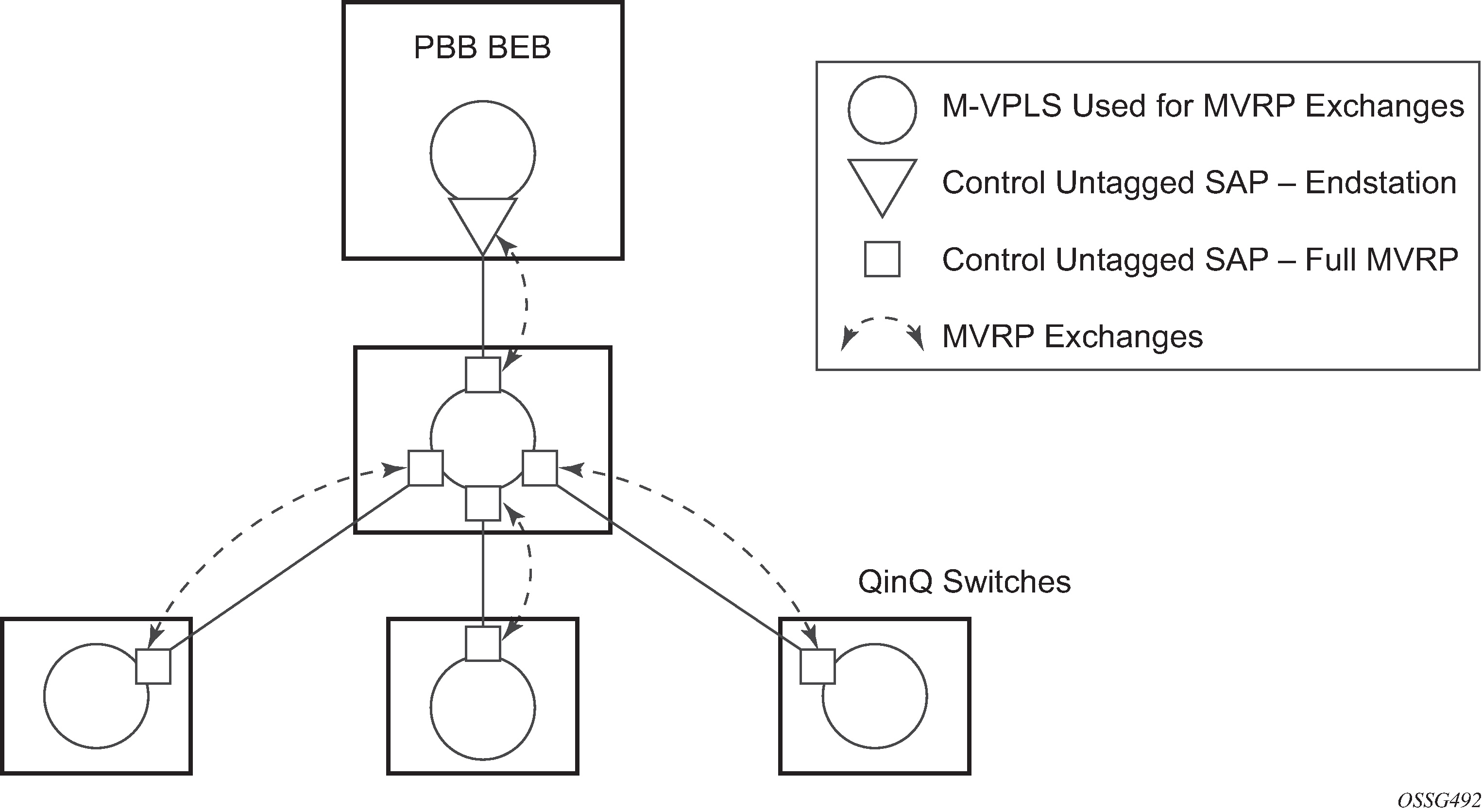IEEE 802.1ak Multiple VLAN Registration Protocol (MVRP) is used to advertise throughout a native Ethernet switching domain one or multiple VLAN IDs to automatically build native Ethernet connectivity for multiple services. These VLAN IDs can be either Customer VLAN IDs (CVID) in an enterprise switching environment, Stacked VLAN IDs (SVID) in a Provider Bridging, QinQ Domain (see the IEEE 802.1ad), or Backbone VLAN IDs (BVID) in a Provider Backbone Bridging (PBB) domain (see the IEEE 802.1ah).
The initial focus of Nokia MVRP implementation is a Service Provider QinQ domain with or without a PBB core. The QinQ access into a PBB core example is used throughout this section to describe the MVRP implementation. With the exception of end-station components, a similar solution can be used to address a QinQ only or enterprise environments.
The components involved in the MVRP control plane are shown in Figure: Infrastructure for MVRP exchanges.

All the devices involved are QinQ switches with the exception of the PBB BEB which delimits the QinQ domain and ensures the transition to the PBB core. The circles represent Management VPLS instances interconnected by SAPs to build a native Ethernet switching domain used for MVRP control plane exchanges.
The following high-level steps are involved in auto-discovery of VLAN connectivity in a native Ethernet domain using MVRP:
-
Configure the MVRP infrastructure
-
This requires the configuration of a Management VPLS (M-VPLS) context.
-
MSTP may be used in M-VPLS to provide the loop-free topology over which the MVRP exchanges take place.
-
-
Instantiate related VLAN FDB, trunks in the MVRP, M-VPLS scope
-
The VLAN FDBs (VPLS instances) and associated trunks (SAPs) are instantiated in the same Ethernet switches and on the same ‟trunk ports” as the M-VPLS.
-
There is no need to instantiate data VPLS instances in the BEB. I-VPLS instances and related downward-facing SAPs are provisioned manually because the ISID-to-VLAN association must be configured.
-
-
MVRP activation of service connectivity
When the first two customer UNI and, or PBB end-station SAPs are configured on different Ethernet switches in a specific service context, the MVRP exchanges activate service connectivity.